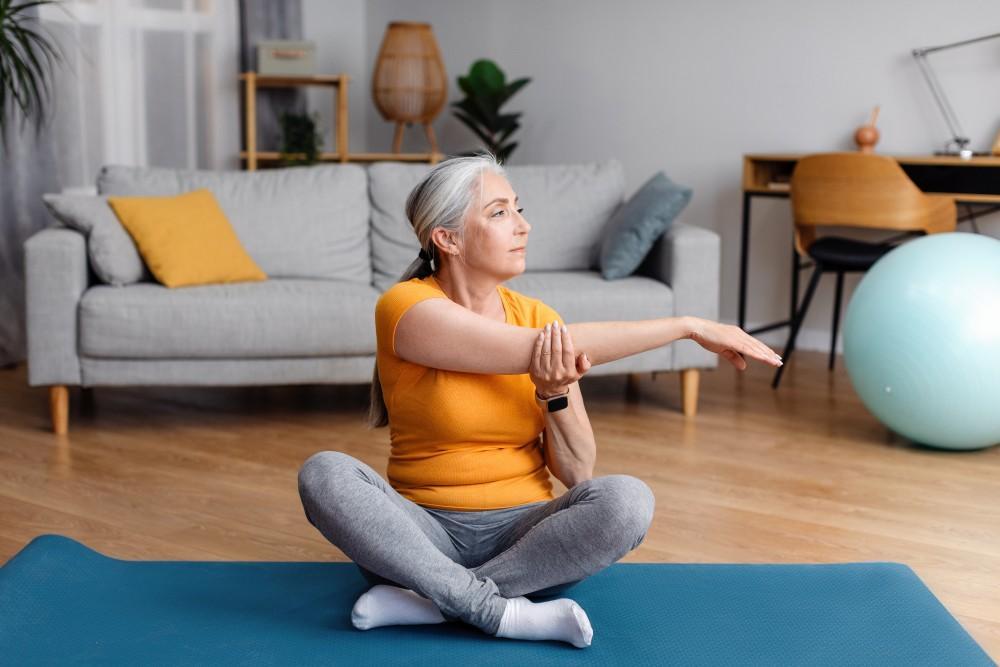
What You Can Do Now to Have Healthy Joints Later in Life

We don’t always think about our joints — until they start aching. But maintaining joint health isn’t just for older adults. Whether you’re in your 20s, 30s, or beyond, the habits you build now can help prevent pain, stiffness, and even arthritis down the road.
The good news? Keeping your joints healthy doesn’t require a complete lifestyle overhaul. Small, consistent choices can significantly affect how you feel as you age.
Dr. David Wu and our team at CurePain are here with simple strategies to keep your joints healthy for the long haul.
Stay active — but be smart about it
Exercise is one of the best ways to keep your joints strong and flexible. It helps maintain a healthy weight, strengthens the muscle supporting your joints, and nourishes your cartilage. But not all exercises are joint.
Your activities should be low-impact (think swimming, cycling, tai chi, and yoga). We also recommend incorporating strength training, stretching, and mobility exercises into your workout routine.
Avoid or limit high-impact activities, like running on hard surfaces or heavy weight lifting with poor form.
Maintain a healthy weight
Extra weight means extra stress on your joints — especially weight-bearing joints like your knees, hips, and lower back. In fact, for every pound you gain, your knees feel about four times the amount of pressure. That’s why maintaining a healthy weight can significantly reduce your risk of joint problems later in life.
Prioritize eating a balanced diet, cutting back on processed foods, and staying active with joint-friendly workouts.
Mind the slouch
Your posture affects more than just your back; it impacts your entire skeletal system. Poor posture can start your joints, leading to discomfort and wear over time.
Whether you’re sitting at a desk, looking at your phone, or lifting something heavy, keep these posture tips in mind:
- Keep your shoulders back and relaxed
- Avoiding hunching over screens
- Bend at the knees, not your back
We can demonstrate the ideal posture to
Eat your way to healthy joints
Inflammation is a major contributor to joint pain and conditions like arthritis. While some inflammation is natural, chronic inflammation can lead to long-term damage. Thankfully, your diet can help control it.
The best foods for joint health include:
- Fatty fish, which are rich in omega-3 fatty acids, help reduce inflammation
- Berries and leafy greens, which are packed with antioxidants that combat cell damage
- Nuts and seeds, which contain healthy fats and anti-inflammatory properties
You can also consider adding turmeric and ginger to your foods, which are natural anti-inflammatory spices.
Whatever you do, limit processed foods and excessive sugar and trans fat, as these can increase inflammation and contribute to joint pain.
Protect your joints from everyday wear-and-tear
While you can’t completely avoid using your joints, you can take steps to protect them from unnecessary stress. We recommend:
- Using proper technique when exercising
- Wearing support shoes
- Taking breaks from repetitive movements
Your body will tell you when it’s time to take a break — listen to it, rest, and modify your activities as needed.
Stay hydrated
Your joints rely on cartilage, a smooth tissue that cushions and protects them. Cartilage is mostly water, so staying hydrated is essential for keeping it healthy. Ensure you drink enough water throughout the day, especially if you’re active or live in a dry climate.
Don’t ignore joint pain
A little stiffness after a workout is normal, but persistent joint pain isn’t something to brush off. If you experience ongoing discomfort, swelling, or reduced mobility, it’s best to see a specialist. Early internet can prevent minor issues from turning into major problems.
Your joints do a lot for you — what are you doing for them? By staying active, maintaining a healthy weight, eating an anti-inflammatory diet, and practicing good posture, you’ll give your joints the best chance of staying strong and pain-free as you age.
If you’re experiencing joint pain or want personalized advice on keeping your joints healthy, reach out to our friendly staff online or over the phone and schedule a consultation at our Torrance, California, office today.
You Might Also Enjoy...


4 Telltale Signs of a Herniated Disc

Spinal Cord Stimulation for Nerve Pain: What to Expect

5 Reasons to Consider PRP Therapy as an Athlete

Does Sciatica Pain Go Away on Its Own?

